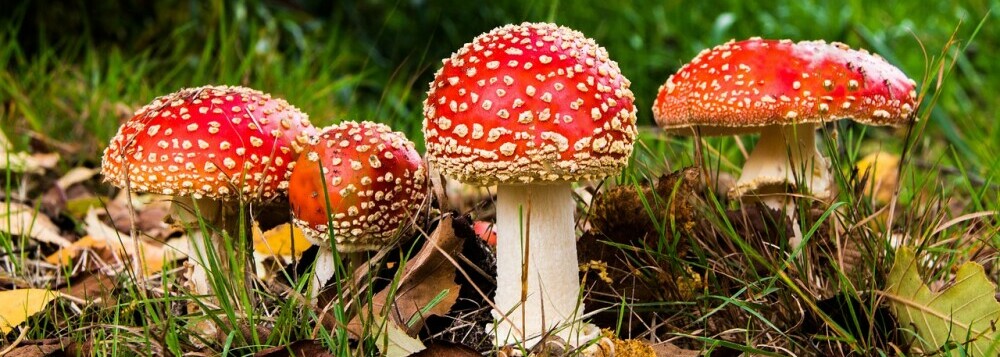Unraveling The Mysteries Of Fungal Reproduction: A Comprehensive Guide
Fungi, often overlooked in the grand scheme of biological diversity, are fundamental organisms that play crucial roles in various ecosystems. One of the most intriguing aspects of fungi is their method of reproduction, which differs significantly from plants and animals. Understanding how fungi reproduce is essential not only for appreciating their ecological significance but also for various practical applications in agriculture, medicine, and biotechnology.

Overview of Fungal Reproduction
Fungi employ diverse reproductive strategies, including both sexual and asexual modes. These strategies allow fungi to adapt to different environmental conditions and ensure their survival and propagation.
Asexual Reproduction in Fungi
Asexual reproduction in fungi involves the production of genetically identical offspring without the fusion of gametes. This process commonly occurs through spore formation or fragmentation of hyphae.
1. Spore Formation:
Fungi produce spores through specialized structures called sporangia or conidiophores. These spores are dispersed by various means, such as wind, water, or animals, allowing fungi to colonize new habitats efficiently.
2. Fragmentation:
Some fungi reproduce asexually through the fragmentation of hyphae. When a hypha breaks apart, each fragment can grow into a new individual, essentially cloning the parent fungus.
Sexual Reproduction in Fungi
Sexual reproduction in fungi involves the fusion of specialized reproductive cells, usually haploid gametes, to form a diploid zygote. This process results in genetic recombination, promoting genetic diversity within fungal populations.
1. Plasmogamy:
In the first stage of sexual reproduction, two haploid hyphae of compatible mating types fuse cytoplasmically, forming a heterokaryotic cell with multiple nuclei.
2. Karyogamy:
Subsequently, nuclei from the fused hyphae fuse to form diploid nuclei in a process known as karyogamy. This results in the formation of a diploid zygote.
3. Meiosis and Spore Formation:
The diploid nucleus undergoes meiosis, producing haploid spores. These spores are dispersed and germinate to form new haploid individuals, completing the sexual reproductive cycle.
Factors Influencing Reproductive Strategies
The choice between sexual and asexual reproduction in fungi is influenced by various factors, including environmental conditions, availability of resources, and genetic predisposition. Fungi exhibit remarkable plasticity in their reproductive strategies, allowing them to adapt to changing environments efficiently.
Conclusion
Fungal reproduction encompasses a fascinating array of strategies that contribute to the remarkable success and diversity of fungi in nature. From the rapid propagation enabled by asexual reproduction to the genetic diversity generated through sexual reproduction, fungi have evolved sophisticated mechanisms to ensure their survival and proliferation. Understanding these reproductive strategies not only enriches our knowledge of fungal biology but also opens doors to innovative applications in agriculture, medicine, and biotechnology.
FAQs
1. Are all fungi capable of both sexual and asexual reproduction?
No, not all fungi exhibit both modes of reproduction. Some fungi may predominantly rely on asexual reproduction, while others primarily reproduce sexually. The reproductive strategy employed by a fungus depends on various factors, including environmental conditions and genetic factors.
2. How do fungi disperse their spores?
Fungi disperse their spores through various mechanisms, including wind, water, animals, and insects. Some fungi have specialized structures, such as fruiting bodies or dispersal units, to aid in spore dispersal.
3. Can fungi reproduce vegetatively?
Yes, fungi can reproduce vegetatively through the fragmentation of hyphae or the formation of specialized structures like rhizoids or stolons. This allows fungi to colonize new substrates and expand their populations rapidly.
4. Why is understanding fungal reproduction important?
Understanding fungal reproduction is crucial for various reasons, including ecological conservation, agricultural management, and medical research. It helps scientists predict fungal population dynamics, develop strategies for controlling fungal pathogens, and harness fungi for beneficial applications such as biocontrol and bioremediation.
Thanks for reading! If you liked this article please leave us a comment and check out some of our others! Have a specific query you want answered? Shoot us an e-mail at contact@commoncuriosities.com
Looking for some further reading? Check out the articles below!

